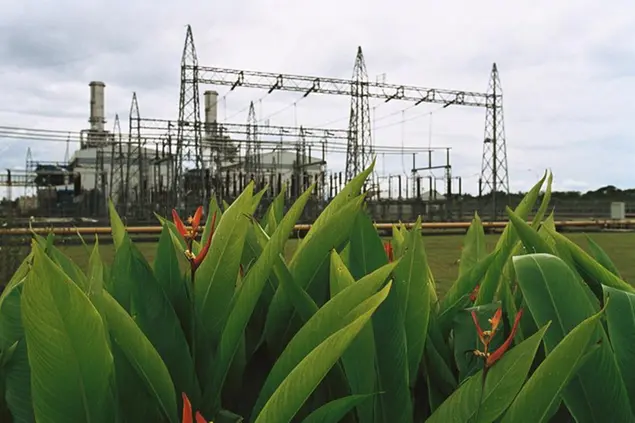PHOTO
Energy and power security means ample supply of electricity with no blackout, there is consistent expansion of power supply to meet rising demand yearly. Choice is the main interest of consumers, a product or service can be expensive but if it gives the consumers satisfaction then it is worth the money. And the main purpose of a regulator like the Energy Regulatory Commission (ERC) is to protect consumers and ensure they have more choices.
With these brief definitions, we now discuss three important recent development in the Philippines power sector.
Cheap electricity via CSP
The Competitive selection process (CSP) by private distribution utilities (DUs) like Meralco and electric cooperatives is among the important provisions of the Electric Power Industry Reform Act (EPIRA) of 2001 (RA 9136).
The latest need of Meralco for 600 MW baseload (ie, running 24/7) capacity resulted in really competitive prices for the consumers. The winners announced during the bid opening last August 27 were SMC's Masinloc Power for 500MW at P5.60/kwh and Aboitiz Power's GNPD for 100MW at P5.74/kwh, and both are coal plants.
These are indeed cheap electricity for two reasons. One, these are way below Meralco's reserved price for levelized cost of electricity (LCOE) at P7.26/kwh. Two, they are lower even in prices contracted several years ago.
I checked the prices of Meralco contracted prices in 2018 where the Philippine Statistics Authority (PSA) rebased the consumer price index (CPI) at 2018 = 100. The CPI in August 2024 was 122.5. So to convert previous prices to August 2024 prices to consider the effect of inflation, the formula is: (Price Aug. 2024 = Price Aug. 2018 x 1.225).
Here are the prices in 2018 of coal plants contracted with Meralco and their converted prices to August 2024 respectively, in pesos per kwh: Masinloc Power, P10.72 to P13.13; San Miguel Energy (Sual plant), P6.61 to P8.10; Therma Luzon, P6.08 to P7.45; Quezon Power, P5.52 to P6.76.
Two lessons here: CSP works for the consumers, gives them cheap electricity despite rise in overall inflation; and coal plants continue to be innovative and efficient leading to lower prices.
Atimonan coal plant may proceed
One good news recently is the possible proceeding of Meralco PowerGen Corp. (MGen) Atimonan power project in Quezon province. It is a huge, 1,200-MW ultra-supercritical, hence a highly efficient low emission (HELE) coal plant with environmental compliance certificate already issued in 2015.
Currently our power generation increase is only about 6 terawatt-hours (TWH) per year, Vietnam has about 14-15 TWH/year. The 6 TWH reflects frequent yellow-red alerts. To remove these plus considering the projected 6 percent GDP growth yearly, we need at least 8 TWH/year going to 10 TWH/year.
The Atimonan plant alone when it starts operating and assuming a 90 percent capacity factor, its projected power generation will be (1,200 MW) x (24 hours/day) x (365 days/year) x 0.90 = 9.46 TWH/year). This will be a big attraction for businesses to enter the Philippines as the regular threats of blackout can be eliminated.
Coal power is an important energy source for many Asians and industrial countries. Here are the coal power generation of countries in 2023 in TWH: China 5,754, India 1,471, US 738, Japan 304, Indonesia 217, S. Korea 203, Vietnam 130, Germany 128, Australia 126, Taiwan 119, Malaysia 81, Philippines 74. Data from Energy Institute, Statistical Review of World Energy 2024.
Ombudsman suspension of ERC Chairperson
Ombudsman Samuel Martinez issued an order dated Aug. 20, 2024 suspending for six months ERC Chairperson Monalisa Dimalanta for 'Grave Misconduct, Grave Abuse of Authority, Gross Neglect of Duty and Conduct Prejudicial to the Best Interest of the Service.' The complainant is Mr. Petronilo Ilagan, president of so-called consumer group, National Association of Electricity Consumers for Reforms, Inc. (NASECORE).
I am not a lawyer but after reading the six-page order, my quick reactions were - where is 'Grave Misconduct,' where is 'Grave Abuse of Authority' there? The ERC is a collegial body, there are other commissioners who decide and vote on decisions, why single out the chairperson only? And NASECORE represents me as an electricity consumer? When and why, considering that I have a different definition of consumer interest?
Four reputable business organizations issued brief but rational statements on this issue.
A joint statement last Sept. 9 by the Philippine Chamber of Commerce and Industry (PCCI), Philippine Exporters Confederation (PhilExport) and the Employers Confederation of the Philippines (ECOP) expressed concern that the six-month suspension order 'may lead to disruption in the workings of ERC, which may impact consumers, businesses and producers alike. This decision along with other recent decisions by the Judiciary puts at risk the trust, independence and authority of the ERC… We advocate for a swift and transparent resolution of the suspension to restore the integrity of the ERC and its Commission.'
Then the Retail Electricity Suppliers Association of the Philippines (RESA) also expressed deep concern that the suspension order 'could not only disrupt and further delay the implementation of the Commission's rules and policies, which heavily relies on the chairperson's leadership… The retail electricity suppliers are already facing complex issues on energy security, it is even more crucial that the Commission remains stable and effective to ensure continuous access to sustainable and reliable power solutions.'
The above three topics were also reported in The Philippine STAR: 'San Miguel, AboitizPower units frontrunners for Meralco CSP' (Aug. 28), 'Meralco seeks DOE nod on Atimonan coal plant' (Sept. 10), 'ERC chief exploring legal options amid six-month suspension' (Sept. 10).
Copyright © 2022 PhilSTAR Daily, Inc Provided by SyndiGate Media Inc. (Syndigate.info).
